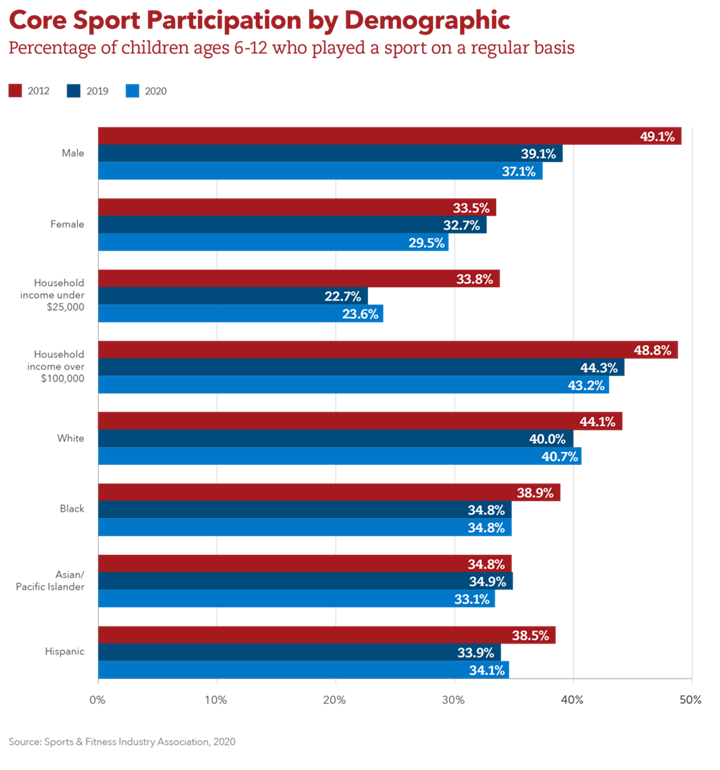|
Some of my fondest memories of growing up are of playing sports. Although I did not become a Division I college or professional athlete, the experience taught me invaluable lessons in perseverance, teamwork, and confidence. Sports wasn’t only beneficial to me. Studies have shown many attributes of youth sport, including structured and consistent physical activity and social support important to childhood development and health and perhaps lower levels of depression. What was a crucial and irreplacable childhood experience for me is unfortunately not equally accessible to all children and adolescents. A recent study found that financial barriers play a significant role in decreasing youth participation in sports. In a recent TD Ameritrade survey asking parents about cost of youth participation in sports, “63% of parents will pay $1200 to $6000 per year for one child’s sports participation, with nearly 1 in 5 paying more than $12,000 a year.” Children and their families are burdened with the costs of equipment, participation fees, transportation, time off from work, and other expenses that deter them from starting or continuing in sports. These costs may be at their highest, and thus participation unattainable, when the only option for sports participation is through private clubs rather than public schools or programs. The Aspen Institute found in 2021, that children in households with income under $25,000 had lower participation rates in organized sports, compared to households with incomes over $100,000. Lack of access to athletic trainers for injury treatment and prevention is yet another barrier to participation in sports for youth. Studies found that schools in areas of lower socio-economic status have less access to athletic trainers than those in areas of higher socio-economic status. This inaccessibility leads to undiagnosed injuries and longer recovery periods which may hasten a child dropping out of a sport completely. If we want to increase youth participation in sports, we must address these barriers and make sports accessible and safe for all children. Creating public, low-cost local leagues for kids who can’t travel or afford private clubs, increasing parks and recreational spaces within urban communities, and increasing the training for coaches and availability of athetic trainers are a few solutions. Although these solutions all require a significant investment, there is support from specific foundations such as the Aspen Institute’s Project Play, which supports youth participation in sports both nationally and in many local communities. It is also important to note that the COVID-19 pandemic has exacerbated and increased these existing barriers to youth participation in sports, especially given the school closings and sport cancellations. Since COVID restrictions on sports have been lifted, almost half (49%) of parents said their child’s mental health has improved. Instead of letting these inequities in youth sports get worse with the pandemic, hopefully this gives schools and communities a chance to see areas of greatest need and act on strengthening their youth sport programs. About the Author
I joined the ECHO Team as a Research Assistant in July 2019. I received my BA in Mathematics and Chinese from Wellesley College in May 2019. Prior to joining the ECHO Team here, I have worked as a Pharmacy Technician at MaineGeneral Health and as an Assistant on the Compensation Team at Beth Israel Deaconess Medical Center. In my free time, I enjoy reading and playing Spikeball and Ultimate Frisbee with friends.
0 Comments
Your comment will be posted after it is approved.
Leave a Reply. |
©2017 WeighingInBlog. All rights reserved. 401 Park Drive, Boston, MA





 RSS Feed
RSS Feed

